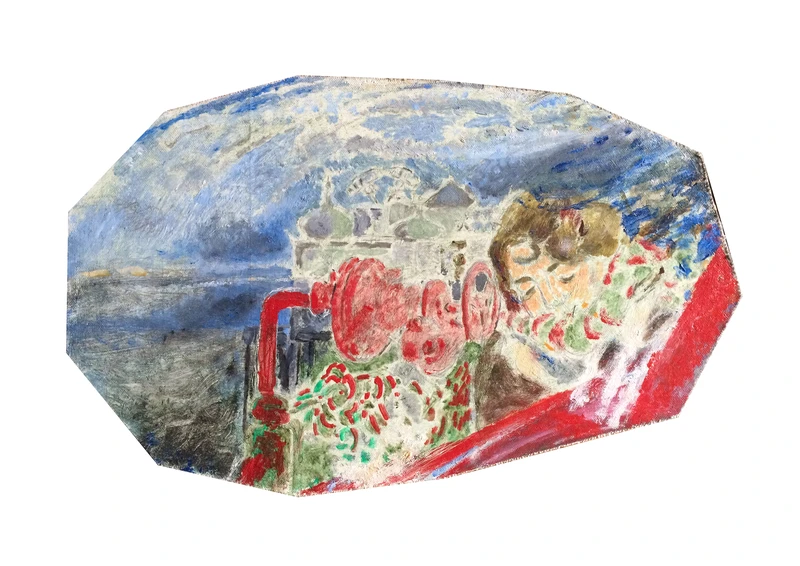Jeffery Camp
27 May-2 Jul 2022
PV 26 May 2022, 6-8pm


The Approach is pleased to present a selection of works in the Annexe by the late English painter Jeffery Camp (b.1923, d.2020).
The exhibition focuses on works from his later life where Camp used small unusually shaped canvases as part of the composition of the paintings, combining highly individual figure compositions with tender studies of nature and paintings of sea and shore, as well as portraits of friends and contemporaries.
“Art has to shock” insists Camp, and as he gently qualifies this pronouncement its real potency is revealed. It is not the shock of the expletive, the wild gesture or the confrontation that he locates as the centre of art’s possibility, rather art “must shock like new love, like early morning”.[1]
These small paintings of sun-blissed afternoons on Sussex clifftops, or flowers in the corners of London parks buzz with life as the painter’s brush dances across their surface, touching down here and there like an inquisitive insect. Camp feels no need to describe the totality of the scene or to fully articulate the taught swelling of a field contour, or the back of a thigh. These paintings synthesise two distinct and simultaneous ways of seeing the world; they are of daydream visions, and they are of the intimate and delighted thrill of looking at things.
Each picture is conjured within an idiosyncratically shaped panel (some small panels having upwards of 20 sides). They are neither the window-like rectangle of painting convention, the photograph and the screen, nor the circular curve of the Earth which bends the distant horizon. Camp’s multi-facetted images hover between these two states as if in their search for an active composition the pictorial rectangle cannot help but tend toward becoming a disc, yet is caught midway, seeming at once to have finite and infinite edges.
Looking at these paintings the eye seems to follow the informal choreography of the dancing brush in the same way that it moves when in the natural world amid the rush of sensory stimulations. And, just like being in the world, the looker is always conscious that what is being seen is a mere fragment of the transforming whole. Barry Schwabsky puts it best identifying Camp’s “irreverent eye for the distinctions between penetrating observation and glamorizing cliché… An Elysium of idiosyncratic painterliness in which the fluidity and dash of a paintbrush’s mercurial movements convey, above all, vision’s avid excursions through a world whose every surface is so seductive the eye cannot remain fixed on any one in particular."[2]
The fragmented brush stroke which lets so much light and life into these late paintings is partially a consequence of an aging body. Finally unable to stage the great lithe and lyrical lines that characterized Camp’s paintings of the 1970s and 80s, the late paintings instead glitter and stutter with dots and dashes of colour that are redolent of the early paintings made on the East Anglian coast of his youth. As Hannah Murgatroyd recently said “[older artists] are in the privileged position of being at an age to paint back through [their] life – to paint the rhythm of youth as much as age – to paint mortality and [their] resistance to it.”[3] Camp paints fresh blooms budding on mature shrubs, and he paints languid youths stretched out on the lush grasses which crest ancient and crumbling cliffs. The aging and the youthful are connected too in the joy and possibility of his chorus of coloured marks which seem deftly held on the threshold of becoming a fully realised paradise.
The shock of these paintings is how much they can hold and how much more they can suggest despite their modesty of scale and peculiarity of form.
Text by Dan Howard-Birt
[1] [2] Paint, Jeffery Camp, DK Publishing, 1996
[3] Conversation with Simon Klein (former student of Jeffery Camp) through Turps Correspondence Course
In collaboration with Art Space Gallery - Representing the Estate of Jeffery Camp